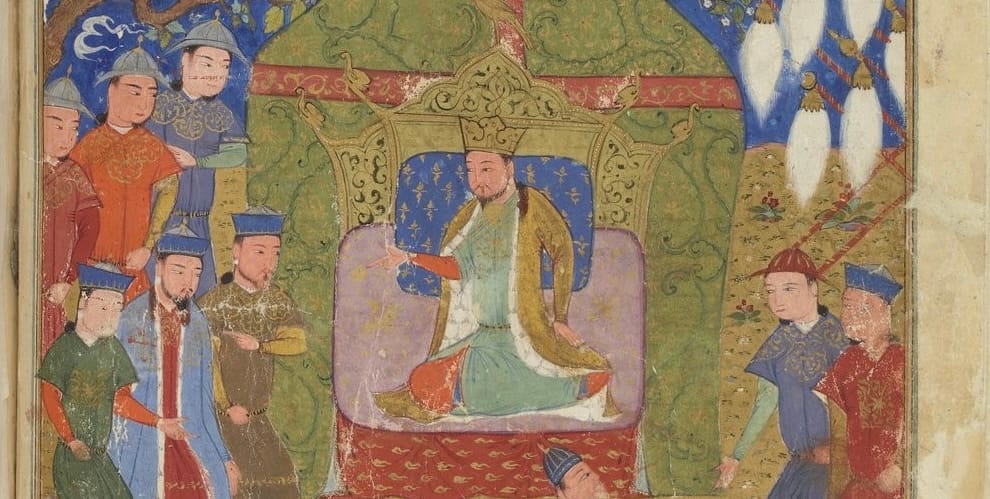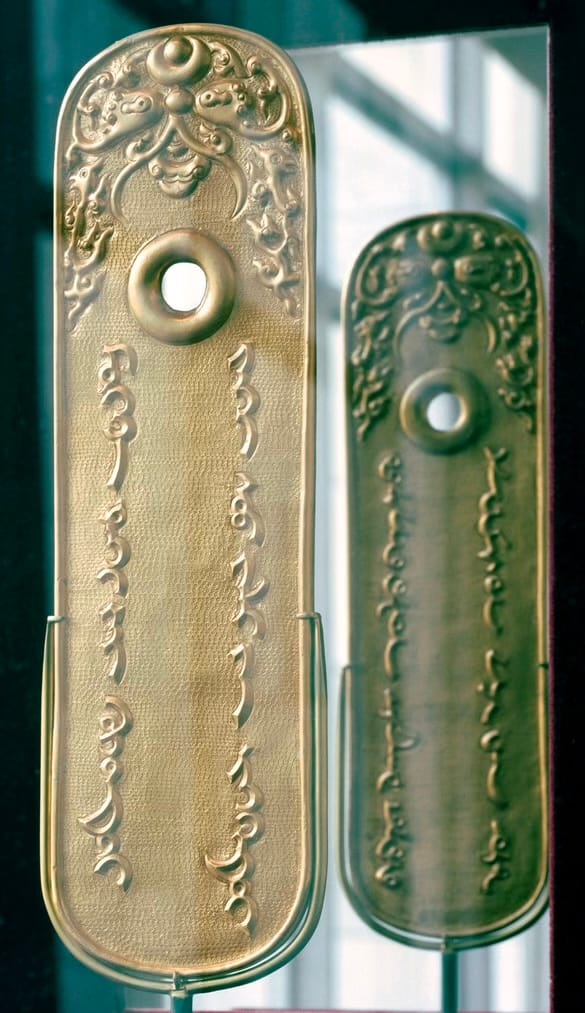“Beginning from the North”: Teaching the Mongol Empire
Discussion of teaching the Mongol Empire

Shortly after I began teaching world history, the Metropolitan Museum of Art hosted an exhibit on the Mongols. I was excited to understand the Mongols better. I already questioned the popular image of the Mongols as fearsome barbarians only obsessed with destruction, but I also wasn’t sure how to teach an alternative narrative of the Mongols. The exhibit included plenty of visual evidence that showed how the Mongols facilitated exchange across Afroeurasia.


Two different styles of Mongol paiza. Left: Late thirteenth-century paiza from China. Source: Metropolitan Museum of Art. Right: Early thirteenth-century paiza, believed to be from the reign of Chinggis Khan. Source: United Nations.
I was most intrigued by the Mongol paiza, the official tablets that gave people the right to fresh horses and supplies from postal stations across the Mongol Empire. As I looked at the paiza on display, I thought about how they reflected the vision of an empire that saw itself governing a vast territory. One of the paizas is usually on display at the United Nations because the paiza, or geregee, was “one of the first universally recognized documents (s) entitling diplomatic immunity and privileges. It contributed to the development of norms and laws of diplomatic relations.” These paizas help us see the Mongols as facilitators across Afroeurasia.

Around the corner from the paiza was a manuscript painting of the Mongol sack of Baghdad. I had already seen another version of this painting (I included the other version in a previous post.) Realizing there were multiple versions of this painting, I began to understand that the popular image of the Mongols as conquerors is just as valid as the idea of them as facilitators. It’s not a question of which characterization is correct; it’s about helping students develop a more nuanced understanding of the Mongol Empire.
During the upcoming month, I will focus on how we teach the Mongols in the context of world history. We want to help students understand the nature of Mongol conquests and how the Mongols transformed Afroeurasia. In this first post, I will introduce some resources for teaching the Mongols and discuss how we can use primary sources to present a more complex picture of the Mongol Empire.



